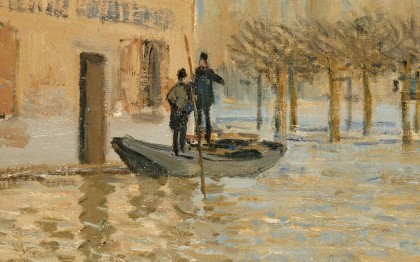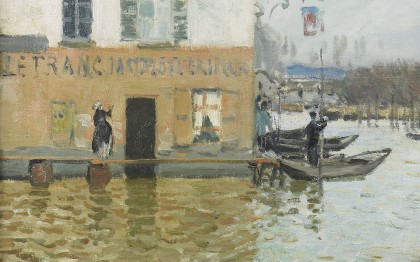“[Sisley] takes hold as a master of the banks of the Seine and its waters, where he breaks into millions of splinters the leaves of autumn with a moving mirror, and opal reflections of the dappled light skies, in a soft grey as if penetrated by melancholy” wrote the art critic Ernest Chesneau in 1882.
Indeed, after his first sojourn with Monet at Argenteuil in 1872, Sisley would never leave the banks of the Seine: in the autumn he would live at Voisins, close to Louveciennes; he moved during winter 1874-1875 to Marly le Roi. In 1877, he lived at Sèvres then in 1880, he chose Moret-sur-Loing. When he selected a site, Sisley would prepare a complete portrait of it: he explored all its aspects, all the viewpoints in all lights and during every season. By turning around a focal point in this manner, he exhausted the subject in a way and created the concept of a series.
The idea truly took form with the flooding of the Seine which inspired his Inondation à Port Marly. In 1872 and 1876, he successively created four and seven paintings on this subject alone. Significantly, Sisley removed all dramatic aspects, all scenes of desolation: the anecdotal fades away in favour of the painting alone. Flooding is a pretext for a masterful study of reflections in which the colour notes of the inn warm up the palette of greys. The interaction between the sky and waters of the river, the painting’s true subject is a guarantee of harmony and unity of light. Here Sisley has created the very first Impressionist “series”, a principle that Monet was to make one of the foundations of modern painting.


